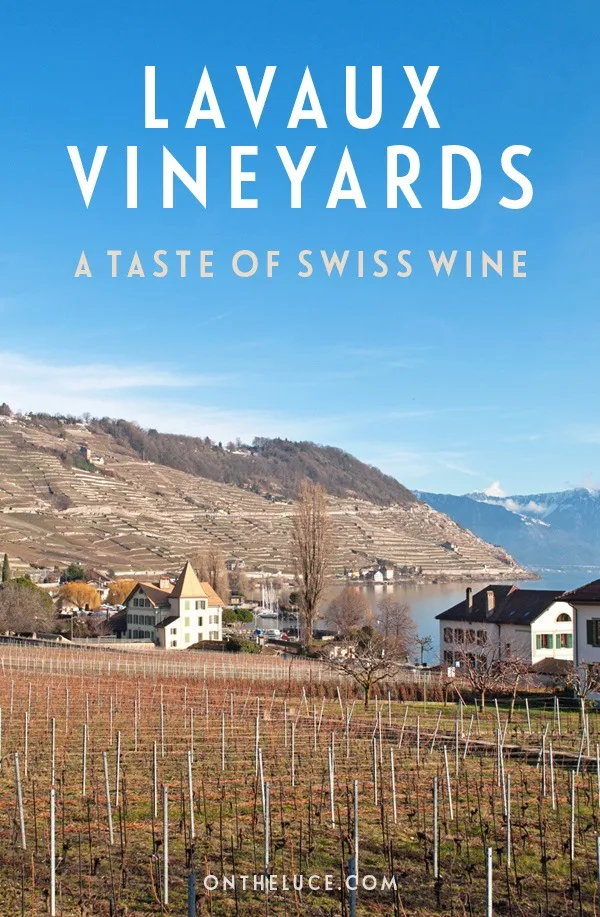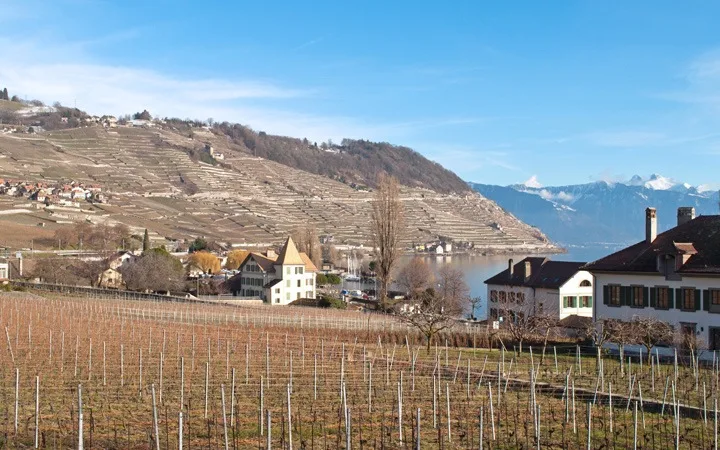
With France to the west, Italy to the south and Germany to the north, Switzerland is surrounded by countries famous for their wines – so why don’t we see Swiss wine for sale? Do they not make any? Is it terrible? Or is it just that the Swiss like to keep it for themselves? It turns out only 1% Switzerland’s wine ever leaves out of the country. With fairly small-scale production and a big demand from the home market there isn’t much left for the rest of us. So if you want to try Swiss wine you’ll need to do it in Switzerland. And if you’re looking for somewhere to start, the country’s largest wine region is just outside Lausanne.
Read more: Lakes and lookouts: What to see and do in Lausanne
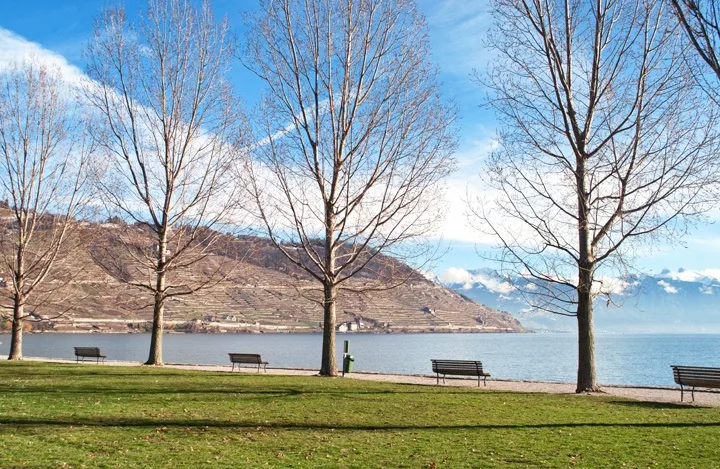
Along the lakefront
The Lavaux wine region covers over 800 hectares and stretches 30km along the shores of Lac Léman (Lake Geneva). Wine’s been made here since Roman times, but it was the 11th century Benedictine monks who kick-started the wine industry with some clever landscape adjustments. They cut stepped terraces into the 1100-foot-high slopes around the lake to create more usable land and stop the soil being eroded.
Lavaux now has some of the world’s steepest vineyards with 40 levels and 400km of medieval stone walls holding it all together. The climate is similar to Germany or the UK, so you need to make the most of whatever sunshine you get. So the slopes face south into the sun, they also get sunlight reflected from the lake, and the stone walls heat up during the day and release heat at night to keep the vines warm.
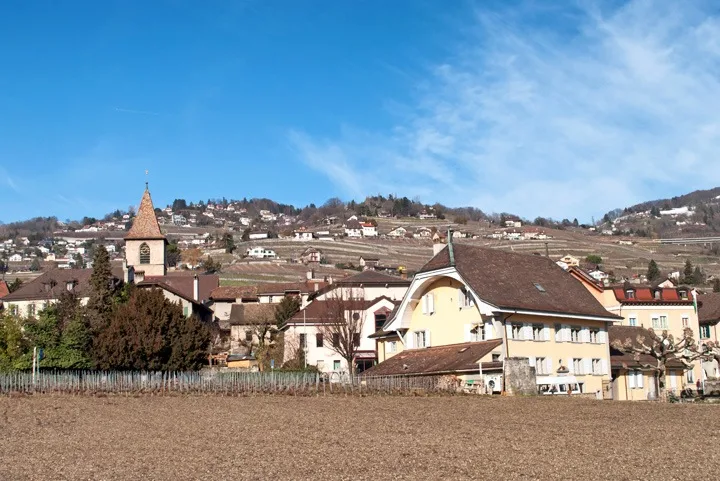
The town of Cully
The terraces do have their challenges though – it’s too steep to use machinery, so everything is done the old-fashioned way with planting and harvesting by hand, no irrigation and minimal use of chemicals. Which is part of the reason UNESCO have recognised the Lavaux Vineyards as a World Heritage Site – that and the breathtaking landscapes. Vine-covered hillsides surround pretty traditional villages with a backdrop of twinkling blue Lac Léman and the snowy Alpine peaks. Not a bad place to sit with a glass of wine.
To reach the vineyards we took the train from Lausanne, and in less than 10 minutes we’d arrived in the village of Cully. It’s one of the largest in a string of 14 small wine-producing towns and villages that stretch along the lakeside. We took a walk along Cully’s waterfront and up onto the hillside through narrow streets lined with historic winegrowers houses that date back to the 16th to 19th centuries.
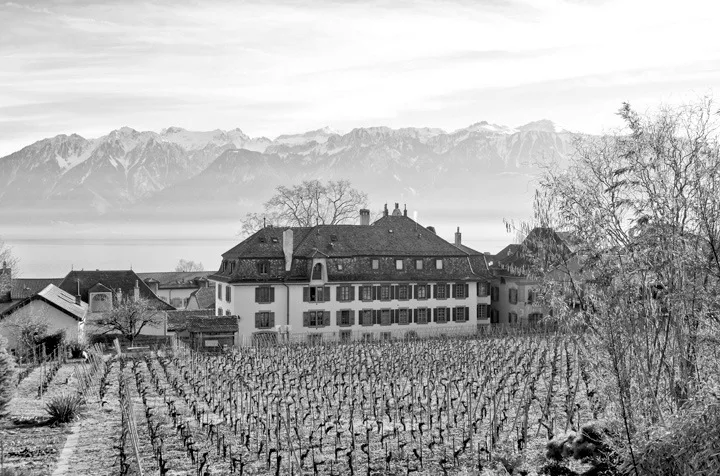
A vineyard with a view
But enough of the scenery – it was time for some wine. We headed to the tasting room at Les Frères Dubois, where three generations of the same family have come together to run the winery. The walls were lined with floor-to-ceiling shelves of wine, with a Saturday morning buzz of people stopping by to choose their wines for the weekend, and the smell of their to-die-for homemade bacon bread.
The Lavaux region is divided into several wine-producing sub-regions. We started off with white wines from Epesses and Calamin, made from the region’s most common grape – Chasselas. It produces crisp, minerally whites that go well with cheesy local specialities like fondue or raclette. The area mainly produces white wines but there are also some reds made with Pinot Noir or Gamay grapes. Most producers are small-scale, boutique-style wineries who only sell direct from their cellars or through local wine merchants.
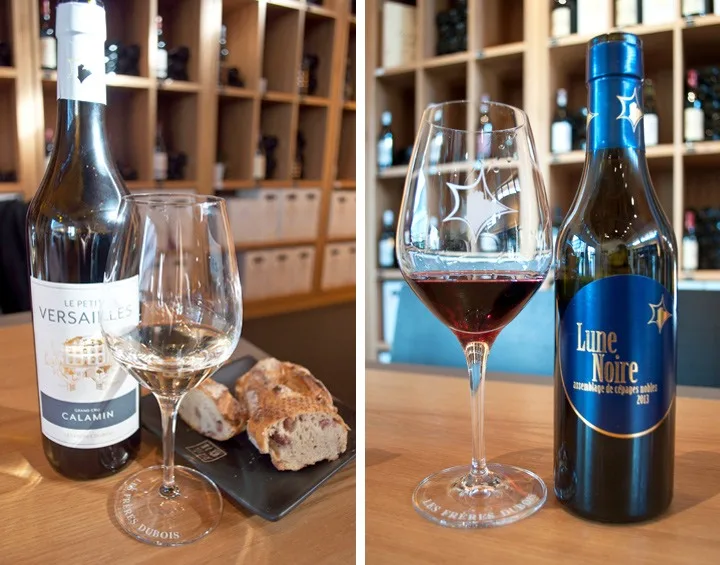
Red and white tasting (and the amazing bacon bread)
It was amazing how different each of the wines tasted even when they were grown just a few hundred metres away from each other and made from the same grape varieties. Seemingly tiny differences in the soil or microclimate from one place to another can make a big difference to the taste of the wines. Five generous tasting samples later we hadn’t found one we didn’t like and were working out how many bottles we could carry on the train back home. The Swiss wine secret was well and truly out.
If you can drag yourself away from the wineries, there are some beautiful walks through the Lavaux region too. The easiest is the lakefront pathway which runs all the way from Ouchy in Lausanne, or there are lots of pathways up into the hills (the tourist office has a good map of the routes). You can get the train or boat one way and walk the other, or in summer there are also scenic mini-train rides through the vineyards.
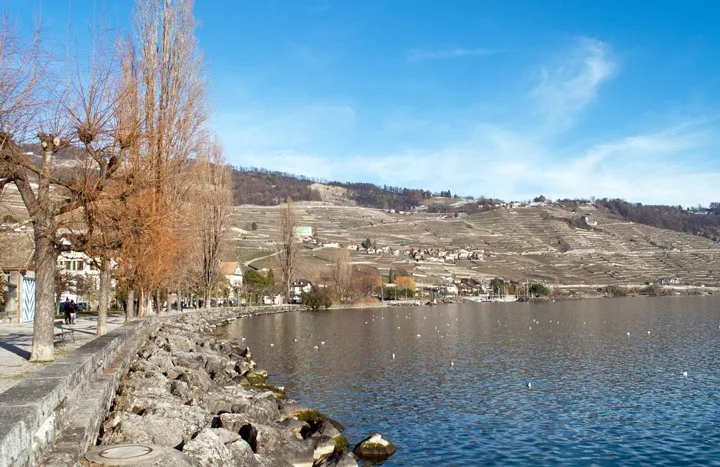
Lakefront walks from Cully
The details
You can easily get to the Lavaux vineyards by train from Lausanne or Monteaux. RER Line 3 stops in Pully, Lutry and Cully, or Line 1 stops at Pully, Lutry, Villette, Cully, Epesses, Rivaz and St Saphorin. The Lavaux Express and Lavaux Panoramic scenic trains run during the summer. You can also get around by boat – the CGN lake steamers call at Lutry, Cully, Rivaz and Vevey once a day during winter and more frequently in the summer months. The tasting room at Les Frères Dubois on Chemin de Versailles in Cully is normally open 10am–12.30pm and 3pm–6.30pm from Monday to Friday and 10am–4pm on Saturdays.
Pin it
Thanks to Lausanne Tourisme for hosting me in Lausanne. All views and opinions are, as always, my own.

